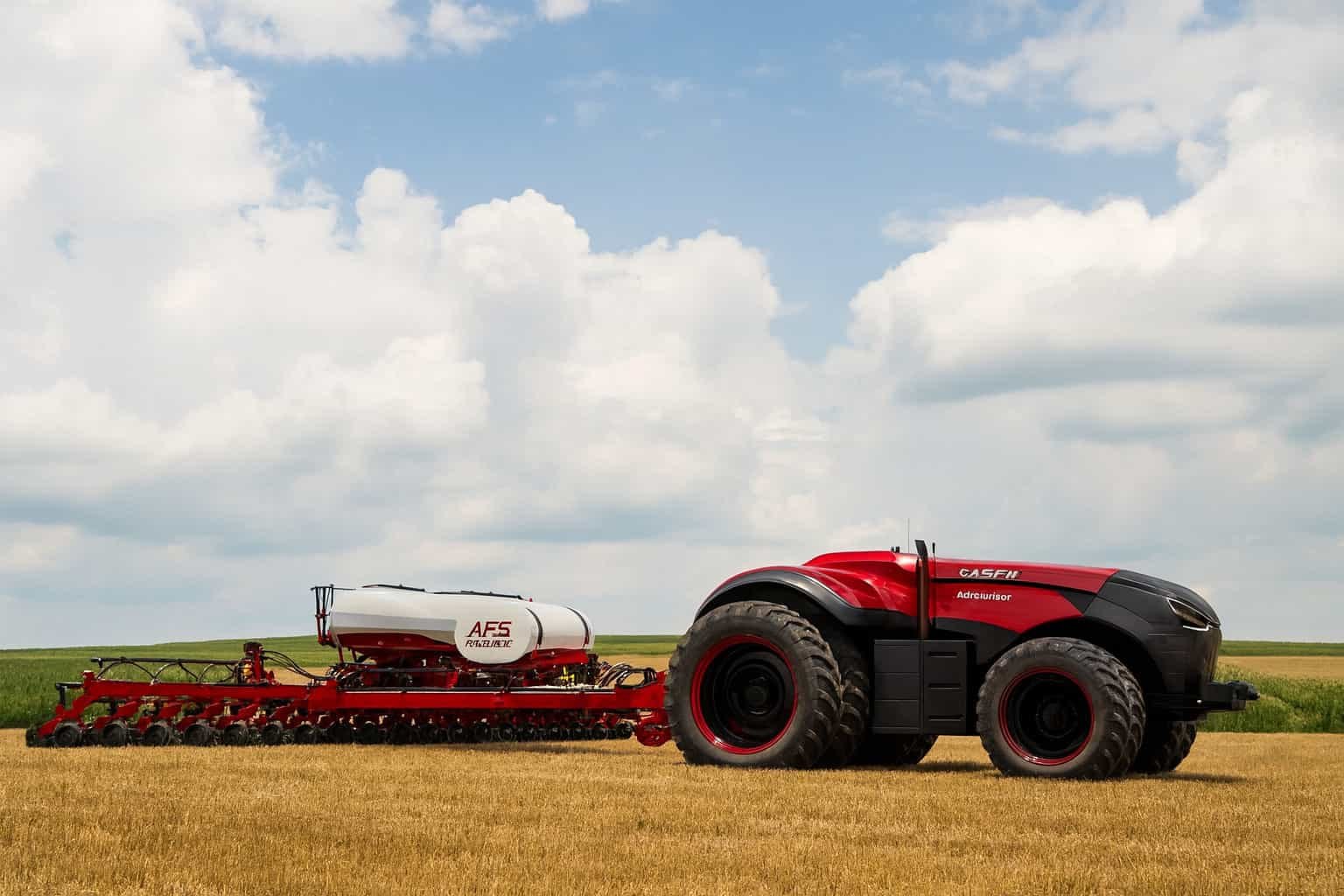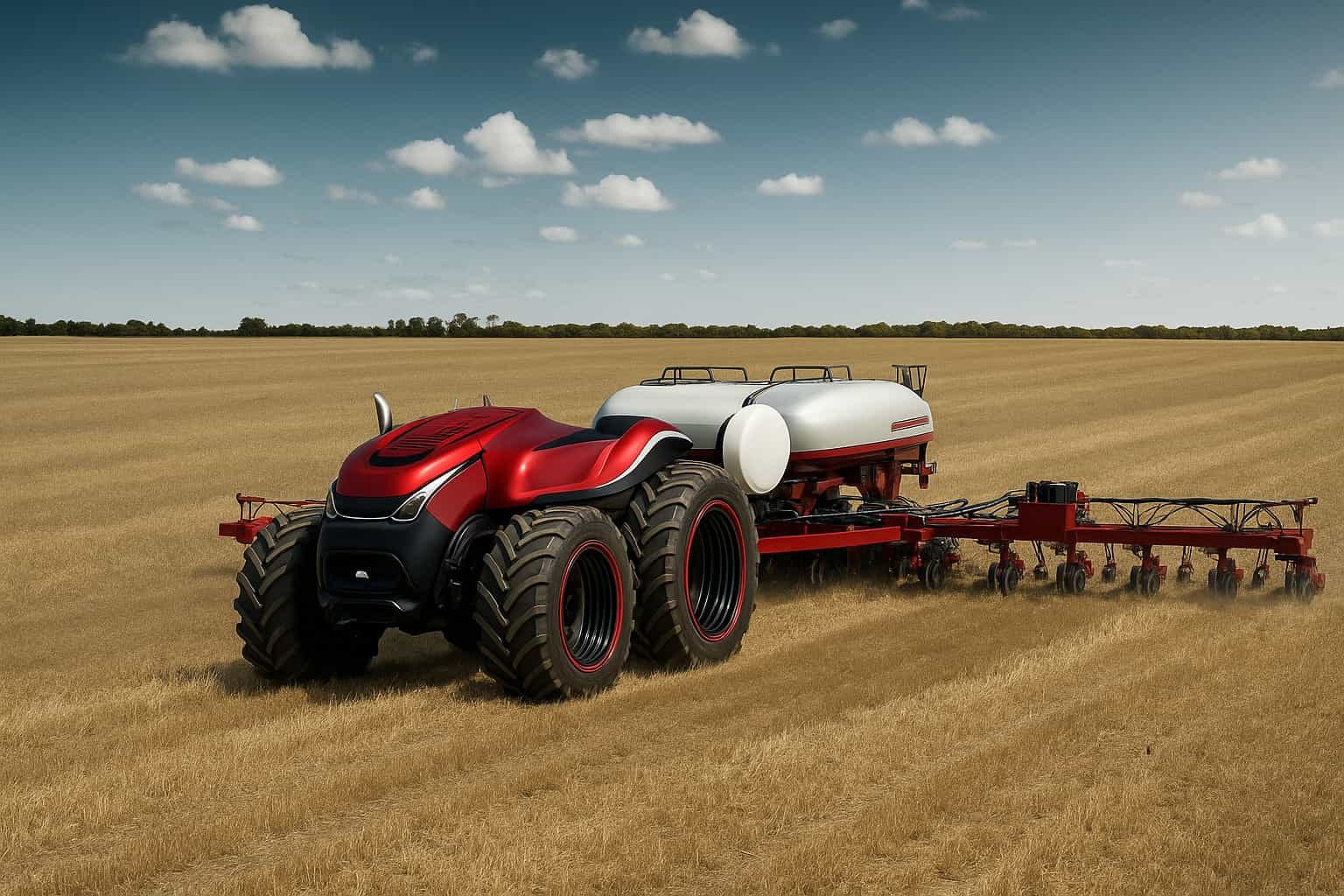What is an Autonomous Tractor?
An autonomous tractor is a self-driving agricultural machine designed to perform farming tasks without human intervention. Using advanced sensors, GPS, and AI, these tractors can plow, sow, and harvest crops efficiently.

Key Features of Autonomous Tractors
- Advanced Sensors: Utilize LiDAR, cameras, and radar for environment perception.
- GPS Navigation: Ensures precise movements and optimized route planning.
- AI and Machine Learning: Enables decision-making and adaptability to changing field conditions.
- Remote Monitoring: Allows farmers to oversee operations via mobile devices or computers.
Benefits
- Increased Efficiency: Reduces labor costs and enhances productivity.
- Precision Agriculture: Enhances accuracy in planting and harvesting, reducing waste.
- 24/7 Operation: Can work continuously without fatigue, maximizing output.
Applications
Autonomous tractors are used in various agricultural activities, including tilling, planting, and crop monitoring, making them a pivotal innovation in modern farming.
What Are the Benefits of Autonomous Tractors?
Autonomous tractors offer numerous benefits, including increased efficiency, reduced labor costs, and enhanced precision in agricultural operations. These tractors are capable of operating without direct human intervention, thus optimizing productivity and resource usage.

Key Benefits of Autonomous Tractors
- Increased Efficiency: Autonomous tractors can work longer hours without fatigue, maximizing field time and improving crop yields.
- Reduced Labor Costs: With fewer operators needed, farms can reduce employment costs and allocate resources more effectively.
- Enhanced Precision: Advanced sensors and GPS technology allow for precise planting, fertilizing, and harvesting, minimizing waste and increasing productivity.
- Consistency: These tractors maintain consistent performance, ensuring uniformity in agricultural tasks and reducing errors.
- Data Collection: Equipped with data-gathering tools, autonomous tractors provide valuable insights into soil conditions, crop health, and overall farm management.
Operational Advantages
- 24/7 Operation: Autonomous tractors can function around the clock, increasing the amount of work done within shorter timeframes.
- Safety: Reduced human involvement lowers the risk of accidents and injuries on the field.
By integrating these technologies, farmers can achieve higher efficiency and productivity, ultimately leading to more sustainable and profitable farming practices.
How do you control speed in an automatic?
To control speed in an automatic car, you primarily use the accelerator and brake pedals. Press the accelerator to increase speed and the brake pedal to decrease speed. The automatic transmission shifts gears automatically based on the vehicle’s speed.

Key Steps to Control Speed:
- Accelerate: Press the accelerator gently to increase speed.
- Brake: Press the brake pedal to reduce speed.
- Cruise Control: For maintaining a constant speed, use the cruise control feature if available.
- Downshift: In certain situations, manually downshift to lower gears using paddle shifters or gear selector for better control, especially on steep descents.
Operational Tips:
- Smooth Transitions: Ensure smooth transitions between accelerating and braking to maintain control.
- Monitor Speed: Regularly check the speedometer to stay within speed limits.
- Environmental Awareness: Adjust speed based on road conditions and traffic.
By following these steps, you can effectively manage your speed in an automatic vehicle.
How Do Autonomous Tractors Work?
Autonomous tractors operate using a combination of GPS, sensors, and advanced algorithms to navigate and perform tasks without human intervention. These tractors can plow, plant, and harvest crops with high precision and efficiency.
Key Components of Autonomous Tractors:
- GPS Technology: Provides accurate location data, enabling precise navigation.
- Sensors: Detect obstacles, soil conditions, and crop health.
- Algorithms: Process data to make real-time decisions and adjustments.
- Connectivity: Allows for remote monitoring and control via cloud-based systems.
How They Operate:
- Mapping: The tractor uses GPS to map the field.
- Planning: Algorithms create optimal paths for tasks.
- Execution: Sensors and cameras ensure tasks are performed accurately.
- Adaptation: The system adjusts in real-time to changing conditions.
Autonomous tractors enhance farming efficiency, reducing labor costs and increasing productivity through precise, data-driven operations.
What Is the Role of Autonomous Tractors in Modern Farming?
Autonomous tractors play a crucial role in modern farming by increasing efficiency, reducing labor costs, and optimizing crop yields. These machines operate with minimal human intervention, using advanced sensors and GPS technology.

Key Functions of Autonomous Tractors:
- Precision Farming: Use GPS and sensor data to perform tasks like seeding, fertilizing, and harvesting with high accuracy.
- Labor Reduction: Minimize the need for manual labor, allowing farmers to manage larger areas with fewer workers.
- Cost Efficiency: Lower operational costs by reducing fuel consumption and wear and tear through optimized routes.
- 24/7 Operation: Capable of working continuously, which maximizes productivity and ensures timely completion of farming tasks.
Technology Behind Autonomous Tractors:
- GPS Navigation: Ensures precise field mapping and route planning.
- Sensors: Monitor soil conditions, crop health, and machine status.
- Machine Learning: Analyzes data to optimize farming strategies and improve future performance.
In summary, autonomous tractors enhance modern farming by leveraging technology to improve efficiency, reduce costs, and increase productivity.

